| کد مقاله | کد نشریه | سال انتشار | مقاله انگلیسی | نسخه تمام متن |
|---|---|---|---|---|
| 4269818 | 1610860 | 2014 | 13 صفحه PDF | دانلود رایگان |
IntroductionA large body of literature supports the co‐occurrence of depression, anxiety, and sexual dysfunction. However, the manner in which affective symptoms map onto specific female sexual response indices is not well understood.AimsThe present study aimed to examine changes in depression and anxiety symptoms and their correspondence to fluctuations in desire, subjective arousal, genital response, orgasmic function, and vaginal pain.MethodsThe study used a 2‐week daily diary approach to examine same‐day and temporal relations between affective symptoms and sexual function.Main Outcome MeasuresThe unique relations between shared and disorder‐specific symptoms of depression and anxiety (i.e., general distress, anhedonia, and anxious arousal) and female sexual response (i.e., desire, subjective arousal, vaginal lubrication, orgasmic function, and sexual pain) were examined, controlling for baseline levels of sexual distress, depression, and anxiety, as well as age effects and menstruation.ResultsAnalyses revealed that changes in depression and anxiety severity corresponded to same‐day variations in sexual response. Specifically, anhedonia (depression‐specific symptom) was related to poorer same‐day sexual desire, whereas greater anxious arousal (anxiety‐specific symptom) was independently related to simultaneous increases in subjective sexual arousal, vaginal lubrication, and sexual pain. Increases in general distress (i.e., shared symptoms) were associated with greater same‐day difficulties achieving orgasm. Notably, only one temporal relation was found; it indicated that higher levels of anhedonia predicted a next‐day decrease in sexual desire.ConclusionsIt is proposed that the simultaneous changes in affective symptoms and sexual function may indicate that they are products of shared underlying mechanisms. That is, in response to stress, the processes manifesting as feelings of weak positive affect and amotivation are the very same processes responsible for diminished capacity for sexual desire. In contrast, the physiological hyperarousal associated with anxiety also gives rise to sexual arousal difficulties and vaginal pain. Kalmbach DA, Kingsberg SA, and Ciesla JA. How changes in depression and anxiety symptoms correspond to variations in female sexual response in a nonclinical sample of young women: A daily diary study. J Sex Med 2014;11:2915–2927.
Journal: The Journal of Sexual Medicine - Volume 11, Issue 12, December 2014, Pages 2915–2927
